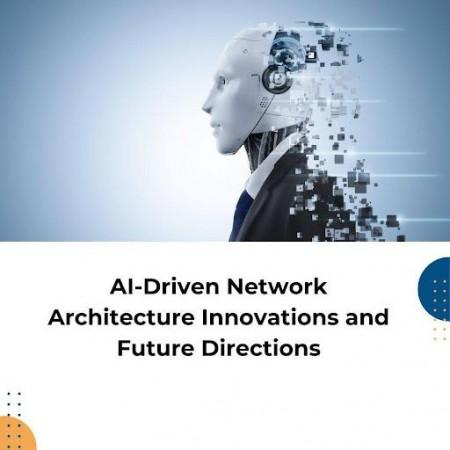
The rapid advancement of artificial intelligence (AI) is transforming network architecture, making it more autonomous, secure, and efficient. The integration of AI into network operations is revolutionizing the way systems are designed, monitored, and optimized. In his latest research, Kishor Kumar Bhupathi explores AI-driven innovations in network architecture, focusing on how AI enhances network security, optimizes resource allocation, and improves real-time decision-making.
The Rise of Self-Optimizing Networks
Self-optimizing networks leverage AI to enhance performance without human intervention. These systems use machine learning to analyze network traffic, predict congestion, and adjust configurations dynamically. By continuously learning from real-time data, self-optimizing networks improve efficiency and reduce downtime.
Studies indicate that AI-driven networks reduce latency by up to 40% and improve data throughput by 55%, ensuring a smoother user experience. These networks also enhance load balancing by dynamically distributing traffic based on current network conditions.
AI in Network Security: Enhancing Threat Detection
The increasing complexity of cyber threats has necessitated the use of AI in network security. Traditional security frameworks struggle to detect sophisticated attacks, but AI-powered systems enhance detection and response times by analyzing vast datasets in real time.
AI-driven security solutions utilize anomaly detection, behavioral analysis, and predictive threat modeling to identify and mitigate risks. Research indicates that AI-based threat detection systems reduce false positives by 30% while improving attack detection accuracy by 65%. Automated security responses help neutralize threats before they cause damage, significantly reducing recovery times.
Automating Resource Allocation and Traffic Optimization
Efficient resource allocation is a critical challenge in network management, especially with the growing demand for high-speed, low-latency services. AI-driven solutions optimize bandwidth distribution by predicting network congestion and reallocating resources accordingly.
AI-enabled traffic management systems have reduced congestion-related packet loss by 45% and improved overall network efficiency by 50%, allowing seamless connectivity across multiple devices and platforms.
The Role of Deep Learning in Network Intelligence
Deep learning is playing an instrumental role in advancing network automation and intelligence. Neural networks analyze network data to predict potential failures and recommend proactive maintenance strategies. AI-powered predictive maintenance has been shown to reduce system failures by 60%, significantly lowering downtime and operational costs.
Additionally, natural language processing (NLP) is simplifying network configuration. AI-driven assistants help engineers automate configurations, reducing human errors and accelerating deployment times, ultimately improving network reliability and efficiency.
Challenges in AI-Driven Network Implementations
Despite its advantages, integrating AI into network architecture presents several challenges. Data privacy concerns, legacy integration, and high computational costs remain major barriers to widespread adoption. Organizations must address these issues by implementing robust data governance policies and ensuring AI models comply with regulatory standards.
The adoption of AI-driven systems also requires skilled professionals to manage AI-based networks. Workforce training and upskilling initiatives are essential for equipping network engineers with the knowledge to operate and optimize AI-enhanced infrastructure, ensuring seamless integration and sustainability.
Future Trends in AI-Powered Networking
The future of AI-driven networking is poised to introduce groundbreaking innovations, including:
- Federated Learning: Enhancing data privacy by enabling decentralized AI model training across multiple network nodes.
- Quantum Computing: Revolutionizing data encryption and accelerating network processing speeds.
- 5G and Edge Computing Integration: Reducing latency and enabling faster, more secure real-time data processing.
- AI-Powered Zero Trust Security Models: Implementing continuous authentication and dynamic threat detection mechanisms.
These advancements will redefine how networks operate, ensuring greater efficiency, security, and adaptability.
In conclusion, AI-driven network architecture is reshaping digital infrastructure, offering enhanced security, optimized performance, and automated management. By leveraging AI for self-optimization, threat detection, and resource allocation, networks are becoming more resilient and adaptive. As Kishor Kumar Bhupathi highlights, the continued evolution of AI technologies will shape future networking systems, ensuring scalability, efficiency, and security in a connected world.

















